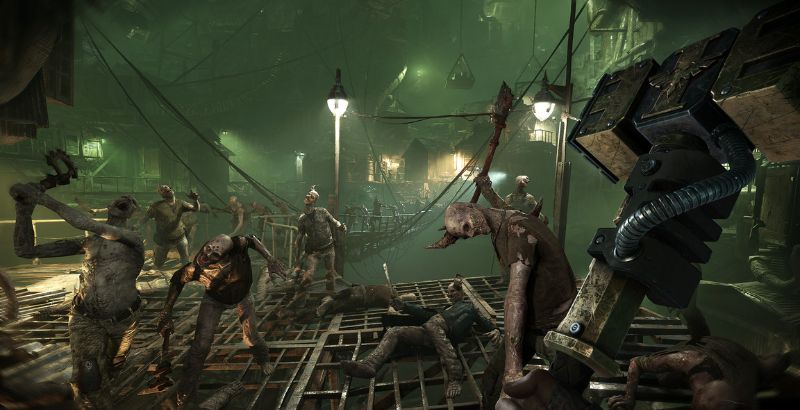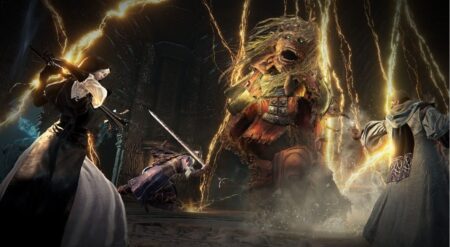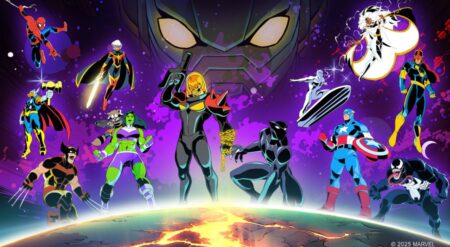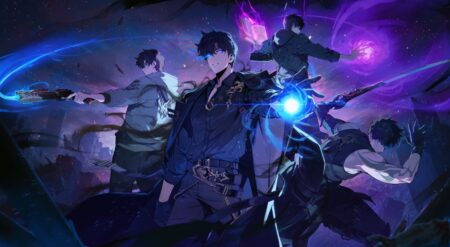
Every year brings a handful of new video games that carry the Warhammer 40000 branding. From mobile shovelware to AAA blockbusters, Warhammer fans never have to worry about having new content to sink their teeth into. 2022 alone has seen the release of four new titles, spanning genres from side-scrolling shooters to turn-based squad tactics. Despite this, Warhammer 40000: Darktide could very well be the best the franchise has received in quite some time. Developed by Fatshark, Darktide translates the horde-shooter formula from their previous two Warhammer: Vermintide titles from fantasy to the grim dark universe of 40k.
Darktide adopts the standard structure for its genre similar to Back 4 Blood or Left 4 Dead. Players are put into groups of four to tackle missions with procedurally generated elements that help keep them fresh during repeated playthroughs. On those missions, players slay countless enemies in frenzied hordes while looting for supplies and dealing with special types of enemies that have unique abilities that can split the group up or deal heavy damage to one player at a time.
When players first start the game they are able to choose between one of four classes that each take their own approach to combating the hordes of heathens that populate missions. There is the massive Ogryn, a tank class that is not interrupted by enemy attacks and can charge into a crowd to disrupt them, the Psyker class that can wield powerful abilities at the risk of downing themselves if they overextend, the Sharpshooter that capitalizes on enemy weak points, and the Zealot that grows stronger as they lose more health.
Each of these classes offers a very specialized approach to gameplay as well as its own voice lines, perk trees, and exclusive weapon classes. This specialization is a double-edged sword. On the positive edge, it offers distinct and unique ways to approach missions. This helps make a squad’s composition more important on harder difficulties as well as encouraging players to make multiple characters to see everything the game’s mechanics have to offer.
The negative edge is that many players may not feel particularly attracted to any of the four and won’t have an easy time picking where to start. This issue is further exacerbated by how strictly players have to stay within the lines of their chosen class to be effective, especially on higher difficulties. This is far from a negative but is rather an aspect of the game that players will feel differently about depending on their preferences.
Outside of missions players are able to develop their characters in various ways that revolve around assembling loadouts comprised of a ranged weapon, a melee weapon, and three modifying trinkets. Each piece of equipment comes with a power rating that easily summarises its strength, making it easy to pick the biggest number if one doesn’t care about how the gear actually plays. If the player is someone who cares, however, each classification of weapon features unique characteristics.

Melee weapons have their own attack combo, strong attacks, blocks, and special abilities while every type of gun features different stats, fire rates, accuracy, and magazine size. This is great to help keep things fresh and give players more of a sandbox to experiment within while going through missions.
Pieces of equipment can also be further customized with skins as well as giving players the ability to spend resources to continually upgrade a weapon they like to a higher power level, allowing them to keep using one that they have a sweet spot for. When it comes time for a new weapon players have two options to get them. The first is to purchase them from a requisition officer for an in-game currency that is earned in the thousands with each successful mission. The second is to complete contracts that reward the player with a particular weapon.
These systems are both really solid ways to give players the ability to experiment with all of the weapon types without requiring such a large investment that it doesn’t seem worthwhile to do while also giving players control over their loot in a way that the randomized loot boxes of the Vermintide games never managed.
Perhaps the biggest success found in Warhammer 40000: Darktide is its fantastic translation of the 40k universe. Its environments are appropriately oppressive and utilitarian. Its enemies are frantic and otherworldly. Its voice lines are appropriately gothic and melodramatic, while it appropriately gives players the feeling of being a small character in a universe filled with abyssal terrors and slow deaths that nobody really cares about.
It is hard to translate just how satisfying it feels to tear through a horde of heathens in Warhammer 40000: Darktide as its thunderous soundtrack plays to words. The best way to do so seems to be simply saying that it is spot-on enough to surely please any fan of Warhammer or horde shooters. Darktide is a Primarch amongst Warhammer games, and it serves the corpse emperor admirably.
Warhammer 40000: Darktide is available now for PC.
Warhammer 40,000: Darktide
TL;DR
It is hard to translate just how satisfying it feels to tear through a horde of heathens in Darktide as its thunderous soundtrack plays to words. The best way to do so seems to be simply saying that it is spot-on enough to surely please any fan of Warhammer or horde shooters. Darktide is a Primarch amongst Warhammer games, and it serves the corpse emperor admirably.







